I Was There
| February 21, 2023Rabbi Naftali Weinberger's latest book, Rav Chaim: The Life and Legacy of the Sar HaTorah (ArtScroll/Mesorah), is being released next week
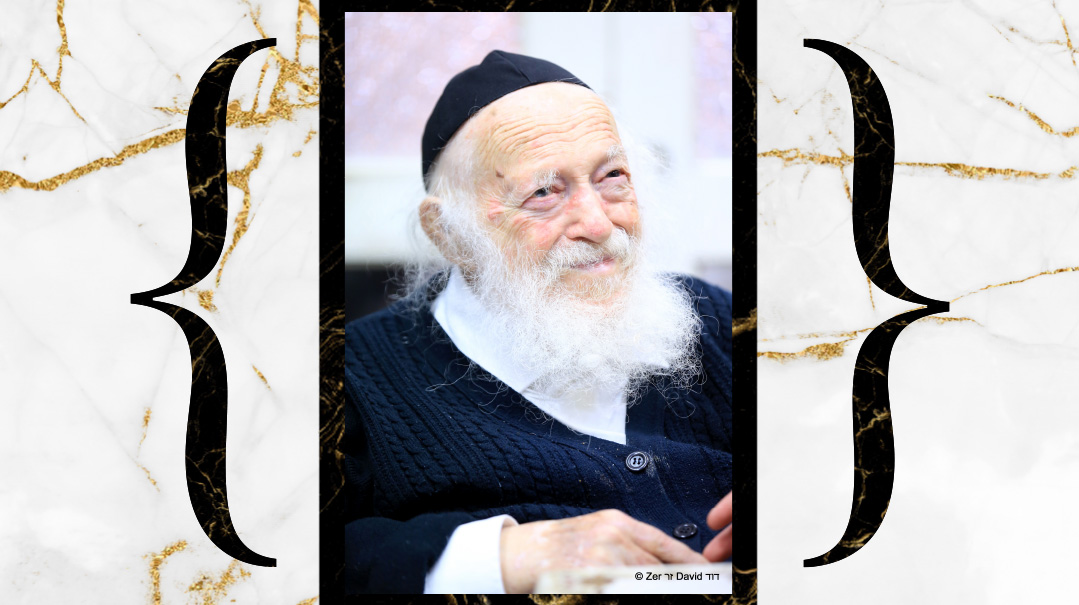
Text excerpts and photos courtesy of ArtScroll/Mesorah Publications
When a young man named Naftali Weinberger entered the famed apartment on Rechov Rashbam, he couldn’t dream that the visit would lead to a long, warm, and devoted relationship with Rav Chaim Kanievsky and his entire family. Rav Chaim encouraged him to write the biography of Rebbetzin Batsheva after her passing, and now, as Rav Chaim’s first yahrtzeit approaches, he’s done the same for the Sar HaTorah — gathering a wealth of encounters and reminiscences and retelling them with detail, charm, and longing
IN the mid-1990s, Rabbi Naftali Weinberger was facing a painful challenge, and so the American yungerman sought out Rav Chaim Kanievsky for a brachah.
“While Rav Chaim’s diligence in Torah was legendary, he also opened his home and his heart to all who sought him, and he somehow shared in everyone’s pain and suffering,” says Rabbi Weinberger, whose latest book, Rav Chaim: The Life and Legacy of the Sar HaTorah (ArtScroll/Mesorah), is being released next week in conjunction with Rav Chaim’s first yahrtzeit. “I became close to Rav Chaim after he directed me through my personal issue. He also instructed me to write a sefer on the mitzvah of Shiluach Hakan (sending away the mother bird before taking the eggs) — a segulah for finding a shidduch and having children, two issues that greatly pained him — and from them on, although I don’t reside in Eretz Yisrael, I’d generally come to Bnei Brak four to five times a year."
Over time, Rabbi Weinberger developed such a unique and close relationship with the entire Kanievsky family that Rav Chaim even encouraged him to write the biography of Rebbetzin Batsheva a”h after her petirah in 2011.
“I’m close with the family and love being around them, and when I released my book Rebbetzin Kanievsky, people realized that I had a connection and would often contact me for assistance in getting an audience with the Rav,” Rabbi Weinberger says. “I’ve been privileged to escort friends and acquaintances, and can testify to many yeshuos I’ve personally witnessed.”
True, some of those salvations sound like stretches of the imagination, but they are all unembellished and accurate. “I know,” he says, “because I was there.”
Some of those stories made it into the book, such as the lifesaving blessing bestowed upon his friend Josh Goldberg. Goldberg — who says he’s proud to have his name known in relation to the story — was working in finance in a high-powered firm. He was a self-described “modern” guy, clean-shaven with a knitted kippah — until he was diagnosed with a critical case of metastasized cancer, his doctor giving him a two-percent chance of survival.
“Josh came in to Rav Chaim, crying, humbled, begging for a brachah,” Rabbi Weinberger relates. “But Rav Chaim seemed unconcerned. ‘You should grow a beard and peyos,’ he told my friend emphatically. My friend was taken aback. ‘A beard? Peyos? In my firm, I had to get special permission just to wear a yarmulke! There’s no way they’ll allow it. And neither will my family.’ Now, Rav Chaim is not usually so assertive and straightforward, but this time he wouldn’t relent. He said, ‘Neither your family nor your company wants a dead father or a dead employee.’
“Well, Josh did it, and had what can only be described as a miraculous refuah sheleimah. Today, he’d never dream of shaving, and even if he does, his wife won’t let him.”
Rabbi Weinberger says that although he merited spending 28 years on Rechov Rashbam, few of the stories in the book are actually culled from his own observations. Mostly, they’re based on interviews he did with Rav Chaim’s children, grandchildren, and great-grandchildren, his surviving sister Rebbetzin Yuspa Barzam, fellow members of Kollel Chazon Ish, and his driver and disciple Reb Shaya Epstein.
“Gadol biographies” sometime get a bad rap for portraying the subjects as infallible, perfect human beings, but Rabbi Weinberger took the reality route instead. In one section, he relates how Rebbetzin Batsheva heeded the advice of her physician and took Valium to calm her anxiety when the tragedies of her many visitors and petitioners became too much for her sensitive soul to bear. For Rabbi Weinberger, was there a level of self-censorship?
“The story about the Rebbetzin taking anti-anxiety medication actually appeared in her biography,” says Rabbi Weinberger. “The backdrop for that was an interview I conducted with her daughter and son-in-law, Rav Zelig and Rebbetzin Bracha Braverman. They told me how the Rebbetzin was very proud of her personal example when she occasionally needed the meds — it was an encouragement for others who were told by their own physicians to take medication.
“After that interview, I discussed it further with several other Kanievsky children who told me I should publish it, that the Rebbetzin would surely have wanted it published. And baruch Hashem, there’s been very nice feedback from this — from therapists, and also from people who told me they themselves became more compliant about taking necessary meds after knowing that Rebbetzin Kanievsky also took medication.”
Rabbi Weinberger, who has authored Rebbetzin Kanievsky, Rav Chaim Kanievsky on Shidduchim, Reb Aharon Leib, and A Practical Guide to the Mitzvah of Shiluach Hakan, says that the past 11 months working on the new book has been a labor of love. His unparalleled access to Rav Chaim and the entire family has given him a broad reach that he passes on page after page, providing readers with an insider’s view of the Sar HaTorah’s remarkable life and achievements.
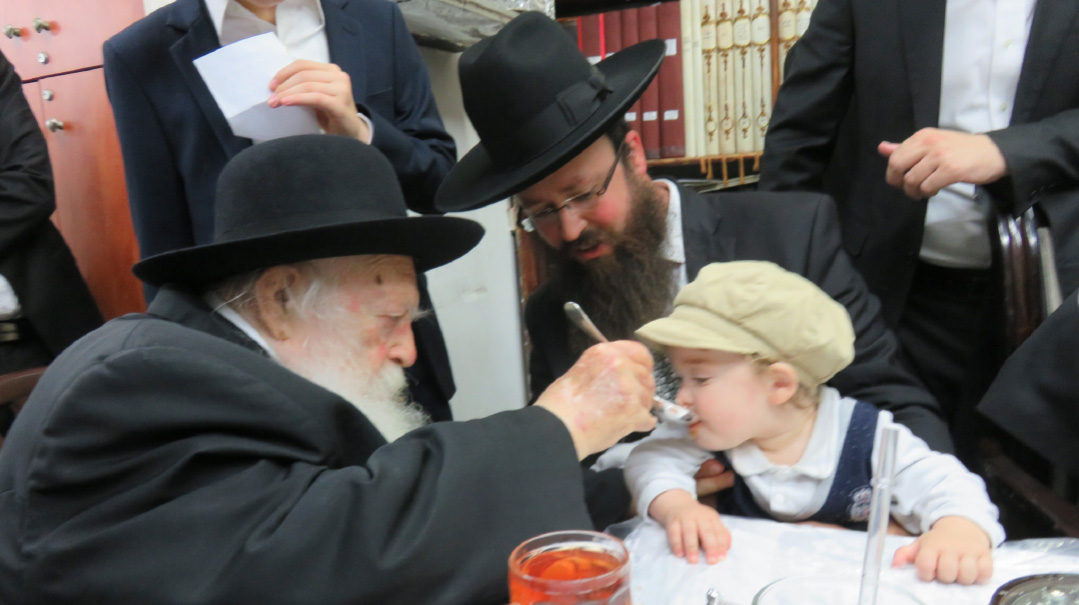
Some excerpts:
WHICH STRINGENCY?
“Abba placed great emphasis on bein adam l’chaveiro [integrity and sensitivity when dealing with others],” Rav Shlomo Kanievsky related.
“Someone once asked him if it was appropriate to replace a shochet who was getting on in years with a younger man. Abba answered, ‘Are you asking about halachah? Do you question the ability of the older shochet to perform shechitah properly? Or is this about a chumrah (stringency)? If you want to change shochtim because of a chumrah, you should know that bein adam l’chaveiro is a bigger chumrah.’
“Lest you think my father had a lenient approach to kashrus issues, you should know that he never ate anything that was not prepared in his own kitchen.”
SNIFFING OUT A REASON
For several years, Menashe* and his family invited a homeless person to join them for the Shabbos night seudah. His unfortunate circumstances and lack of access to proper hygiene caused the guest to have an offensive body odor, but his hosts did their best to tolerate him. When they moved to a new home in another neighborhood in Yerushalayim, Menashe asked his former neighbors not to give the homeless person their new address, because the family had decided to stop hosting him.
Over the next several months, Menashe suffered several unusual misfortunes. He went to Rav Chaim for a brachah and advice.
Rav Chaim asked, “Perhaps you hurt someone and have to improve in bein adam l’chaveiro?”
Menashe told Rav Chaim about the homeless person and the reasons they decided not to tell him where they moved.
“In the merit of inviting this individual back to your Shabbos table,” Rav Chaim said, “your misfortunes will go away.”
That is exactly what happened. Within a few days of the guest’s rejoining them, Menashe’s problems were resolved.
CHOOSING A LULAV
One day during Tishrei, Rav Chaim went out to purchase a lulav. In the first store he entered, the proprietor eagerly offered him one. Rav Chaim examined it, then shook his head and placed it back on the table. He was handed a second lulav, and that one was put back down, as well. The third lulav met with his approval. He paid for it and left the store.
Shmuel* had been watching Rav Chaim. He followed Rav Chaim’s son-in-law Rav Zelig Braverman outside the store and said, “I can’t get over your father-in-law’s mazel. It takes me such a long time to find a suitable lulav — and look how Hashem blessed him! In under ten minutes, Rav Chaim found a lulav he liked.”
Rav Zelig smiled and said to Shmuel, “Please come home with us.”
When they entered Rav Chaim’s home, Rav Zelig showed the man five other lulavim on Rav Chaim’s table. “You see,” he explained, “Rav Chaim knows that people watch his every move. If he enters a store and leaves without buying a lulav, it would be difficult for that shopkeeper to sell other lulavim, as people would say, ‘Rav Chaim was there and obviously was not satisfied with his merchandise.’ Hence, no matter which store he goes into, he buys at least one lulav and brings it home.
“I guarantee you,” said Rav Zelig, “Rav Chaim spends much more time choosing a lulav than you do!”
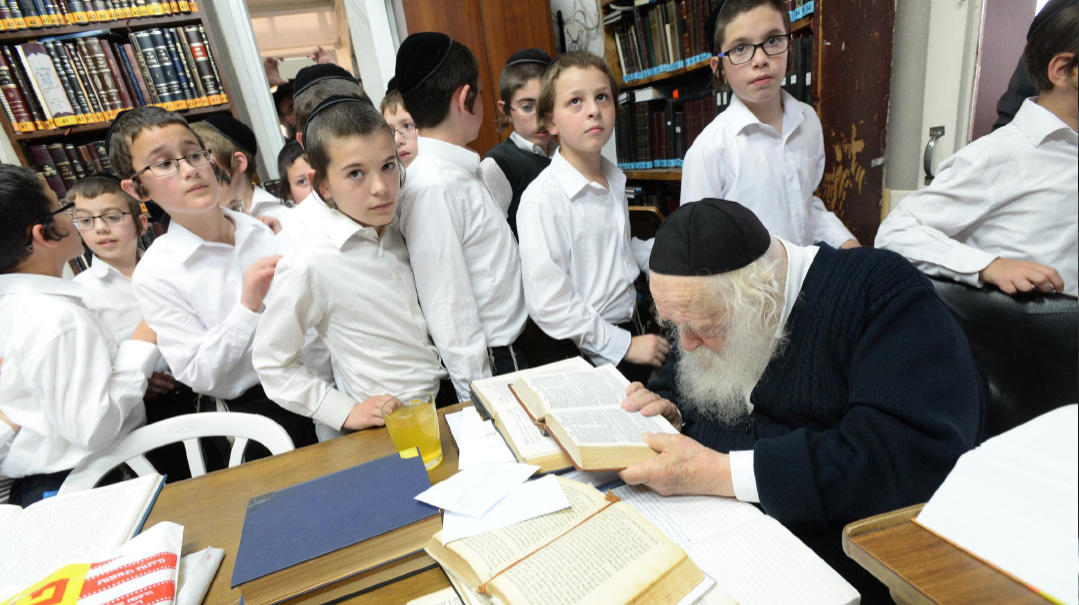
Photo: Shuki Lehrer
RETURN TO OWNER
“It was close to midnight when I saw Rav Chaim hurrying down Rechov Rashbam,” recalls Rav Avraham Yeshayah Greineman. “He was in his seventies at the time. It was uncharacteristic of him to rush or to be out at that hour, so I asked if I could be of assistance. He motioned me to accompany him as he continued toward the stop for the 400 bus to Yerushalayim.
“ ‘A bochur from Yerushalayim left a shopping bag with some items in my house,’ explained Rav Chaim. ‘I’m looking for him to return his possessions.’
” ‘Why didn’t you send a grandchild to find him?’ I asked.
“ ‘I was the one who found the lost objects, not my grandson, so it is my mitzvah,’ he replied. ‘Besides, I remember what the bochur looks like, since he came to speak to me in learning, so I will be better able to identify him.’ ”
BEARING THE PAIN
Every day during receiving hours, people from all over the world, afflicted with countless difficult diagnoses and tzaros, came to the Kanievsky home for brachos, solace, and encouragement. Urgent requests regarding shidduchim, naming babies, medical issues, and tefillos were delivered throughout the day. Politicians, heads of institutions, mechanchim, and businessmen would visit to gain Rav Chaim’s sage advice. Jews facing crises cried on his shoulder.
“What do you think?” he asked one day, when the lines of suffering Jews seemed endless. “How much suffering can I listen to each day?”
A very great deal, apparently. Before he retired every night, he concluded the day with chapters of Tehillim for all those who shared their troubles and challenges with him over the past 24 hours. He ended his day as he spent it, with his heart focused on Klal Yisrael.
“Approximately 15 years before Saba passed away,” Rav Gedaliah Honigsberg related, “he was in pain and not feeling well. His doctor was called, and he asked Saba, ‘What is hurting you?’ Saba replied, ‘All the pain and suffering I hear from people who come to visit me is what’s hurting me!’
“I once asked Saba how he dealt with all the tzaros, stress, and horrific medical diagnoses he heard daily,” Rav Avraham Yeshayah Steinman related. “Saba replied that although it was very difficult for him to deal with all the misfortunes he heard about during kabbalas kahal, he was able to cope through the study of Torah. He then cited the verse in Tehillim (19:9): ‘The precepts of Hashem are right, gladdening the heart.’ Only through Torah was he able to find comfort.”
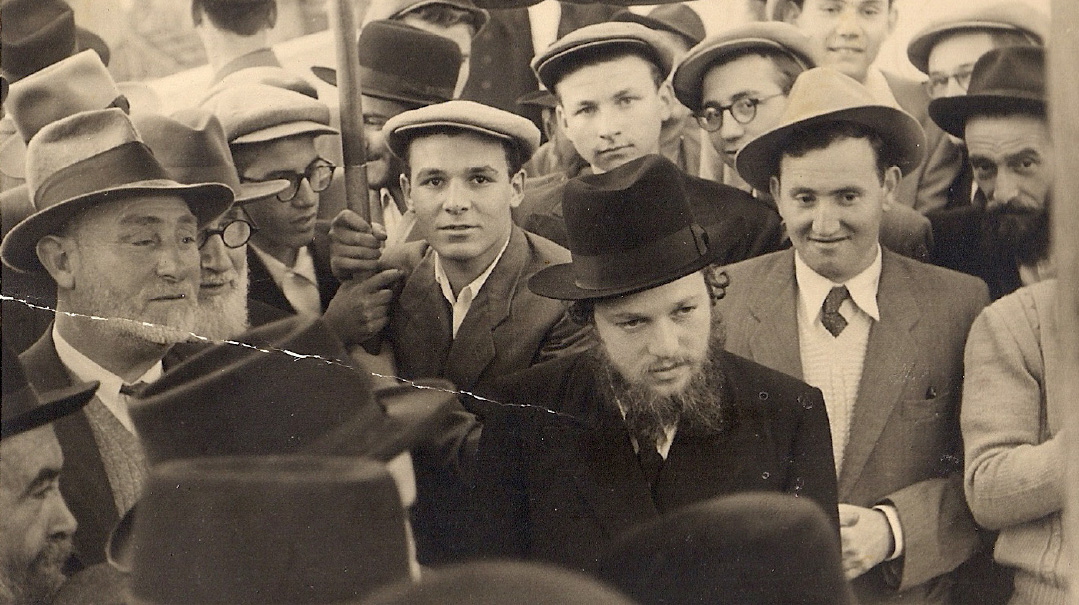
Rav Chaim at his wedding. Rebbetzin Batsheva reported that from the time they were married, Rav Chaim would speak divrei Torah in his sleep
I KNOW MY BATSHEVA
During one bein hazmanim, Rav David Epstein, Rav Chaim’s son-in-law, went to visit his grandfather Rav Elyashiv in Bayit Vegan, at the home of his daughter Leah and her husband, Rav Ezriel Auerbach. During the learning zeman, it was practically unheard of for Rav Elyashiv to schmooze about anything; he talked only in learning. But during bein hazmanim, Rav Elyashiv would converse more readily.
Now, he commented to his grandson, “I hear that your father-in-law has no set hours for kabbalas kahal. Here we have set hours, but if a question of pikuach nefesh arises, we make an exception, of course. It must be so difficult not to have scheduled hours.”
Rav Epstein replied, “There is one difference between you and Rav Chaim. Your house is set up with people outside your door to admit only emergency questions. At Rav Chaim’s house, his wife — your daughter — is at the door. When she hears about people’s misfortunes, she actually encourages them to go in to her husband for a ‘quick’ brachah.”
Rav Elyashiv smiled broadly and told Rav Epstein, “I understand. You don’t have to explain about your mother-in-law’s benevolent heart and how she is always trying to help people. I know my Batsheva well!”
MINIMIZE THE MELACHAH
Kobi* was a former yeshivah student who gave up religious life, served in the Israeli army for three years, and then traveled to the Far East to “find himself.” Throughout this time, his pintele Yid constantly bothered him about moving away from the observant life he had known.
During a visit to Israel, Kobi told Rav Chaim about his experiences. Then he added, “There is no way I am ready to commit to a religious lifestyle, but I have a guilty conscience for not being religious.”
Rav Chaim’s response took him by surprise. “Do you smoke?” he asked.
“Yes, I do,” replied Kobi.
“I would like you to stop smoking on Shabbos,” said Rav Chaim.
“Absolutely not!” replied the ex-yeshivah bochur.
Rav Chaim tried but could not convince him. Finally, he said, “I would very much appreciate it if you stopped smoking on Shabbos completely. However, if you feel unable to do that, at least do the following: When you finish a cigarette, let it burn out by itself. Actively putting out a cigarette with your hands is mechabeh, extinguishing, one of the 39 prohibited melachos. Make sure you do not do that. Whenever possible, think of ways to minimize your desecration of Shabbos.”
For some reason, Kobi agreed.
When he returned to Rav Chaim several months later, a kippah adorned his head. He told Rav Chaim that he had begun to constantly think of ways to minimize his Shabbos desecration — until he was able to keep Shabbos completely.
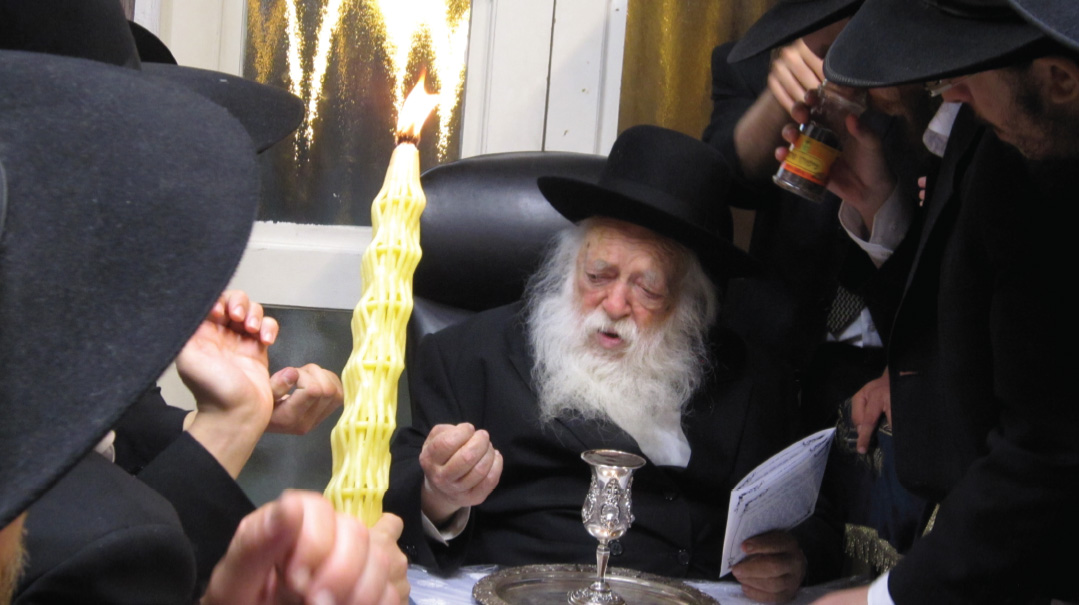
Photo: Yaakov Cohen
NOT ON SHABBOS
Approximately three years before Rav Chaim passed away, I was approached by a bochur — we’ll call him Ilan — who, unfortunately, had left the Torah path. He was planning to be in Israel at the same time as I was, in three months, and asked if I would accompany him to visit Rav Chaim.
I told him I would gladly take him. Then I suggested, “If you want to make Rav Chaim happy, perhaps you should put on your tefillin daily until you go to him.” I was sure Rav Chaim would appreciate it and would give him a special brachah.
Ilan agreed to the deal and put on tefillin until the visit. Before we went in, I felt dread in the pit of my stomach; it was hard to predict how Rav Chaim would reply and react to the situation. When we entered the room, I told Rav Chaim that Ilan put on tefillin daily for close to three months in anticipation of this visit to the Rav. Rav Chaim clasped Ilan’s hands and blessed him to grow up to be a big talmid chacham and to continue to don tefillin daily.
“But although you have to don tefillin daily,” he said with a smile, “please make sure you don’t wear them on Shabbos and Yom Tov!”
Rav Chaim then showered the bochur with many more brachos. As of the writing of this book, Ilan continues to wear tefillin every day — besides Shabbos and Yom Tov, of course.
BORROWED TIME
A young baal teshuvah had been studying in a yeshivah for some time and making tremendous strides in Yiddishkeit, when a ruptured aneurism suddenly cut his life short. His rosh yeshivah wanted to offer consolation to the bochur’s father, but was anxious about facing him. He knew the father had asked another visitor, “How did G-d allow my son to pass away when he had just started to get close to Him and keep His mitzvos?”
The rosh yeshivah went to discuss the situation with Rav Chaim, who instructed, “Tell the father that his son was supposed to pass away a few years earlier. The only reason Hashem extended his life was so that he could get close to Him.”
When the rosh yeshivah went to console the bereaved father, the father asked the anticipated question, and the rosh yeshivah offered Rav Chaim’s response. The father became very emotional.
“That is true,” he replied. “A few years before my son became religious, he was involved in a car accident in which the other passenger was killed. My son spent a while in the hospital, and his attending physician told me it was a miracle he survived the crash.”
SLEEP TALK
Rav Gedaliah Honigsberg related: “When Saba was in a deep sleep during his evening rest or during the hour he rested in the afternoon, phrases such as ‘The halachah is like Rava’ or ‘He is obligated to take challah’ were commonly heard.
“I once asked Savta about Saba talking in his sleep, and she said that he had been doing it for as long as they had been married. About two or three times a week, he spoke divrei Torah in his sleep.
“Savta added, ‘In the earlier years, when I came home and heard Saba talking when he was supposed to be taking his daytime nap, I assumed he was talking to one of our neighbors in learning. When I went into the room, it took me a while to realize that nobody else was there, and it was just Saba talking in learning during his sleep. In later years, even though he was using a CPAP [continuous positive airway pressure] machine to assist with his breathing due to sleep apnea, Saba still spoke divrei Torah in his sleep. I heard him several times say the words chayav or patur. I once heard him saying, ‘The Aruch LaNer said in the name of Rav Nosson Adler that women are obligated in Parshas Zachor.’ ”
(Originally featured in Mishpacha, Issue 950)
Oops! We could not locate your form.







